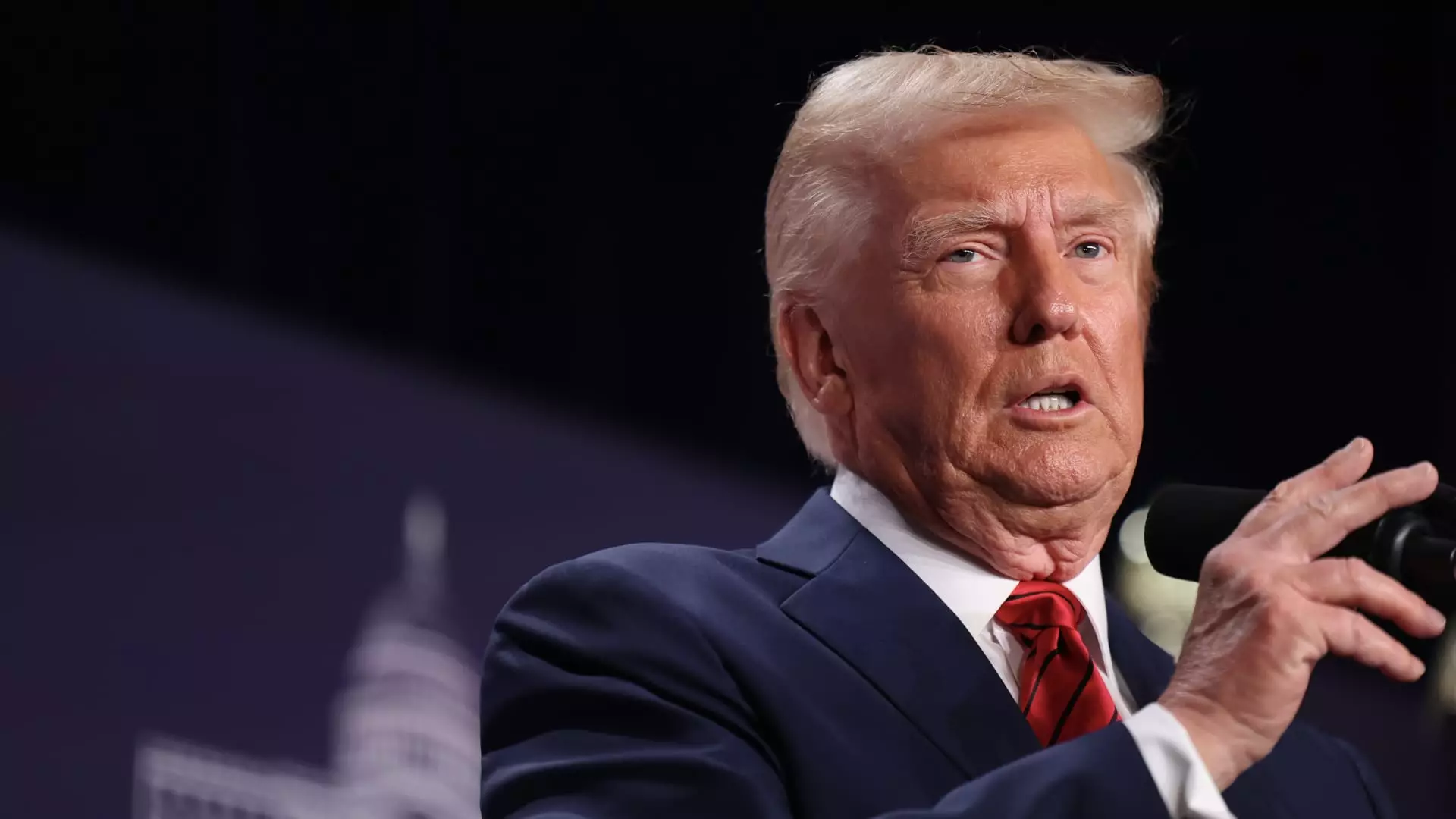The ongoing conversation about tariffs has become a quintessential aspect of economic and trade policy in the United States, especially under the Trump administration. The proposed tariffs are poised to significantly affect the U.S. economy, consumer prices, and the availability of goods, challenging the notion that imposing such taxes on imports can yield substantial benefits for American workers and industry. As President Trump commits to implementing substantial tariffs on key trading partners like Canada, China, and Mexico, it is essential to critically examine the potential outcomes of these fiscal measures.
As confirmed by the White House, the new tariff structure will impose a 25% tax on goods from Mexico and Canada and a 10% levy on imports from China starting February 1. Economists express serious concerns about the implications of these tariffs. Mary Lovely, a senior fellow at the Peterson Institute for International Economics, notes that finding any positives from such measures is exceedingly difficult. The stark reality is that U.S. consumers may find themselves facing higher prices and a reduced assortment of goods on store shelves due to these added costs, which businesses are likely to pass on to customers. With imported goods forming a significant portion of what American consumers rely on, the impending financial ramifications cannot be overstated.
In 2022, Canada, China, and Mexico were the three largest sources of imports for the U.S., with a combined import value exceeding $1.4 trillion. Tariffs, a form of tax on these foreign goods, will indeed lead to higher expenses for American businesses, which often translates into elevated retail prices. Moreover, the specter of fewer product options looms large, diminishing consumer choice.
Exemptions and Uncertainties in Tariff Implementation
With the information surrounding these tariffs still in flux, uncertainties persist regarding potential exemptions. President Trump has previously hinted at the possibility of excluding Canadian oil from the tariff list, reflecting an administration strategy that may lean towards keeping certain economically crucial imports tax-free to alleviate potential backlash from domestic consumers. Mark Zandi, chief economist at Moody’s, emphasizes that there are often “exemptions and carve-outs” in tariff structures, which could serve as a mitigating mechanism to limit the repercussions on consumers.
The ongoing dialogue surrounding these specifics indicates that the administration may strive to balance its tariff agenda with consumer interests to avoid adverse political consequences. However, this creates an environment fraught with uncertainty, causing market volatility and confusion for both consumers and businesses.
The anticipated tariffs could result in substantial revenue for the federal government—estimates suggest approximately $1.3 trillion through 2035 from the increase in duties. This influx is intended to partly fund the more extensive tax reductions favored by the Trump administration. While the projections paint an initially appealing picture, deeper analyses reveal that these tariffs could also shrink the U.S. economy significantly, impacting growth trajectories.
In an analysis by the Peterson Institute, it was shown that a 10% tariff on Chinese goods could potentially reduce U.S. GDP by $55 billion, while the higher tariffs on imports from Canada and Mexico could induce a staggering $200 billion decrease in GDP. These numbers reflect the complex interplay of tariffs and economic activity, underlining the potential for an overall downturn rather than the promised growth.
Long-term Consequences and Trade Relations
Beyond immediate economic impacts, tariffs also risk mar outlooks regarding international trade relations. The prospect of retaliatory tariffs from affected countries—particularly China, which has a history of responding to U.S. trade measures—could escalate tensions, leading to a trade war. Such confrontations not only threaten job losses within the U.S. but also hinder exporters’ ability to access international markets, further complicating the economic landscape.
Additionally, the structural nature of tariffs complicates the narrative that they are a silver bullet for job creation. While the administration touts a potential increase in domestic job opportunities, economists like Lovely and Cox highlight the disproportionate distribution of jobs related to tariff-affected industries. Factories producing steel, for example, hold a fraction of the workforce employed in sectors utilizing steel as an input, resulting in net job losses rather than gains.
While tariffs under the Trump presidency are framed as a boon for American industries, a critical analysis reveals a maze of negative economic implications. Higher consumer prices, reduced product choices, potential retaliation resulting in a trade war, and the overarching threat of job destruction all indicate a complex and potentially harmful economic landscape. As the conversation around tariffs continues to evolve, Americans must be vigilant in understanding the intricacies of these policies and their true implications for the economy.

